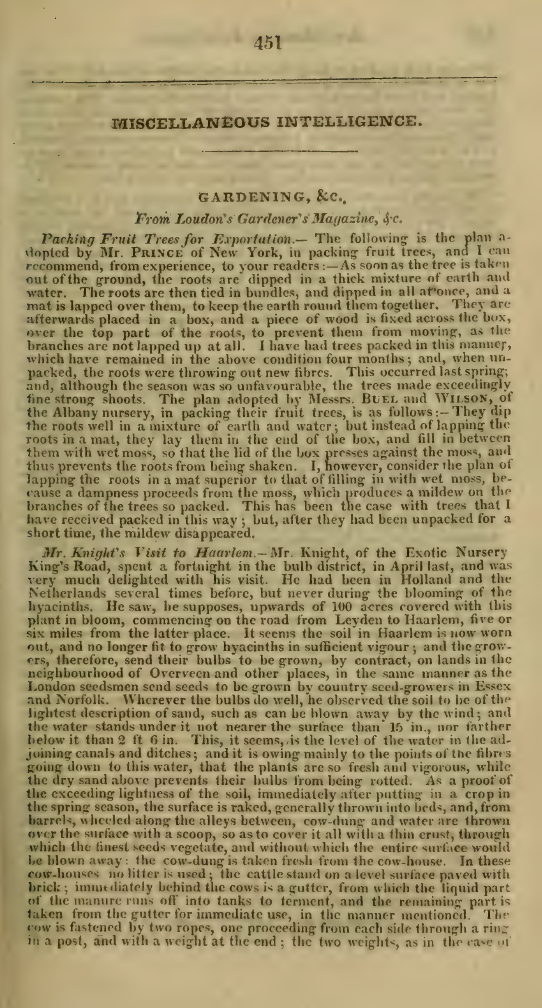Miscellaneous Intelligence
DOI:
https://doi.org/10.21504/saqj.14.2676Keywords:
Horticulture, 19th-century botany, Cape Colony -- Natural history, Agriculture, 19th-century zoology, Gardening, Historical Geography, Geology, Astronomy, Medicinal sciences, Arts, Statistics, EconomicsAbstract
This section of "Miscellaneous Intelligence" covers a wide array of topics related to gardening, agriculture, natural history, and colonial news, primarily through notes compiled from Loudon’s Gardener's Magazine and various scientific society reports.
Horticulture and Products: The section details successful methods for packing fruit trees for exportation (using earth/water paste and either a mat or wet moss, with a preference for the mat method). An account of Mr. Knight's visit to Haarlem describes the extensive Hyacinth bulb cultivation, noting the extremely light, sandy soil and the practice of using liquid cow-dung to stabilize the surface. The notes also describe various unusual pyramidal and dwarf-trained fruit trees.
Colonial Agriculture: Reports from New South Wales indicate great success with tobacco and promising futures for the opium poppy, olive tree, and vine, suggesting wine and oil could become major exports. It defends the appearance of native Australian foliage, attributing its "grotesque" reputation to the practice of burning forests.
Materia Medica and Botany: Several medicinal plants are described: the Columbo root (Locculus-palmatus) from East Africa (used for dysentery), Angustura bark (Bomplandia) from South America (a tonic), and various uses of oak bark and Croton Eleuteria. Detailed instructions are provided for cultivating the opium poppy (Papaver somniferum) and preparing opium, noting successful trials in Britain. Also described are the unique Balsam of Gilead (Amyris gileadensis) and the geographically restricted Double Cocoa-nut palm (Seychelles).
Medical and Practical Use: D. Fanning reports on the curative powers of the Guaco Plant in South America against the bites and stings of poisonous snakes, as well as its use for rheumatism and gout. Separate notes recommend growing tobacco plants for preparing a decoction to use as an effective insecticide for cottagers, alongside the use of lime-water.
Agriculture & Science: Notes cover Mr. Petri's theory that frequent early shearing of sheep increases the fineness and quantity of wool by directing nutritive fluids to the skin. Other agricultural points discuss the deterioration of soil (sagiline) through sun and air exposure, and the advantages of deep wells for irrigation being adopted across France.
Foreign Intelligence: A note on Dr. Siebold details his arrest in Japan for obtaining maps of the empire, highlighting the country's strict exclusion policy toward Europeans.
Downloads

